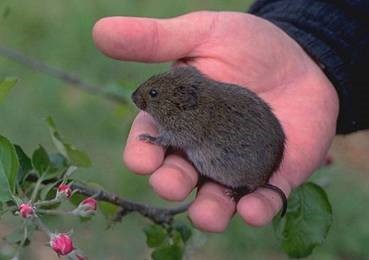Facts
Meadow voles are the most common vole species in the United States. They breed rapidly and experience population booms every few years, which leads population densities to measure in the hundreds of voles per single acre of land. As these pests populate backyards, gold courses, farms, and gardens and feast on grasses, seeds, tubers, tree bark, clover, and alfalfa, property owners should act quickly to remove meadow vole infestations at the first sign of activity.
Identifying Features
Small rodents, meadow voles grow between 5 and 8 inches in length. Their tails are almost half as long as their bodies and they’re covered in dense gray or brown fur that’s often peppered with black and red. Males and females of the species appear similar in both size and color. As is the case with most rodents, meadow voles have two pairs of incisor teeth that are constantly growing and compel the pest to gnaw on any available materials to keep the length in check.

Habitat/Region
Moist environments with dense ground cover, such as prairies or marshy grasslands, are the preferred habitats of meadow voles. The rodents wear down visible runways in the grass as they travel between burrows and feeding sites. Property owners should be alert for signs of vole damage like bark stripped from the base of trees or damaged bulbs, seeds, and tubers. These behaviors devastate crop yields and vegetation growth to the point where farmers and gardeners may incur substantial financial losses because of voles.


